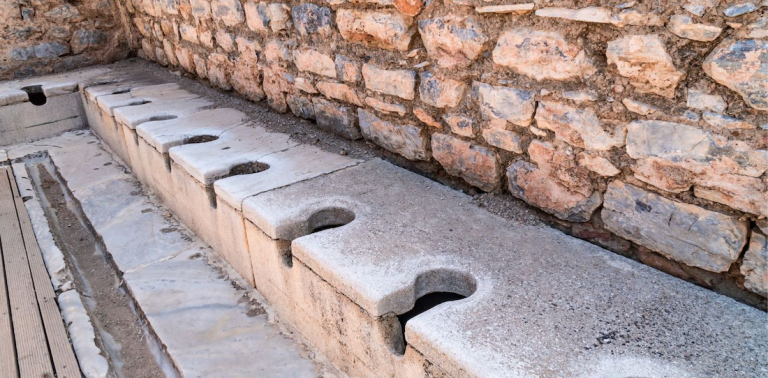
Understanding How Traditional Values Influence Daily Cleansing Habits Across Continents
New York, N.Y. — Across the globe, personal hygiene practices in the bathroom reveal fascinating cultural divides that extend far beyond simple preference.

From the sophisticated bidet culture of Asia to the toilet paper traditions of Western nations, these everyday choices reflect centuries of cultural evolution, environmental awareness, and deeply held beliefs about cleanliness and comfort.
The way people approach post-toilet hygiene serves as a compelling window into
cultural values, with practices varying dramatically between East and West.
While millions of people in Asian countries embrace water-based cleansing systems, Western populations have largely maintained their reliance on paper-based solutions, creating a global divide that influences everything from bathroom design to environmental impact.

- Who: Asian populations, particularly in Japan, South Korea, and Middle Eastern countries, predominantly use bidets and water-based cleansing systems. Meanwhile, residents of the U.S., Canada, and most European nations continue relying primarily on toilet paper for personal hygiene.
- What: Bidets—devices that use pressurized water streams for post-toilet cleansing—dominate Asian bathrooms, while Western countries maintain their historical preference for disposable toilet paper. These contrasting approaches represent fundamentally different philosophies about effective personal hygiene.
- When: These cultural practices evolved over centuries, with bidet traditions strengthening throughout the 20th century in Asia while Western toilet paper culture solidified during the same period through mass production and marketing.
- Where: The most pronounced cultural divide exists between East Asia and Western nations, though regional variations occur within both cultural spheres, influenced by local infrastructure and economic factors.
- Why: Religious beliefs emphasizing ritual purity, environmental consciousness, infrastructure development, and historical trading relationships all contributed to shaping these divergent hygiene traditions across different cultures.
Advanced Bidet Technology Transforms Asian Bathroom Culture
Japan leads the global bidet revolution with technologically sophisticated toilet systems featuring heated seats, adjustable water pressure, air drying functions, and even musical accompaniment. These high-tech bathroom fixtures have become standard in Japanese homes, hotels, and public facilities, reflecting the culture’s emphasis on technological innovation and personal comfort.
Korean and Middle Eastern cultures similarly embrace bidet technology, viewing water-based cleansing as superior to paper alternatives. This preference connects to religious traditions emphasizing ritual cleanliness and cultural values prioritizing thorough hygiene practices.

Western Toilet Paper Tradition Maintains Cultural Dominance

Toilet paper remains deeply embedded in Western bathroom culture, supported by convenient availability, familiar usage patterns, and established infrastructure.
American and European consumers have developed strong brand loyalties and purchasing habits around paper products, creating a multi-billion-dollar industry.
Recent surveys indicate that while some Western households express curiosity about bidet alternatives, traditional toilet paper usage continues dominating due to established habits, installation costs, and cultural comfort with existing practices.
Environmental Impact Drives Growing Global Conversation
Environmental advocates increasingly highlight the sustainability advantages of bidet systems over toilet paper production.
Manufacturing toilet paper requires significant water resources, chemical processing, and tree harvesting, while bidets primarily consume water during actual use.
Dr. Sarah Mitchell, an environmental health researcher, explains that “bidet systems can reduce household paper consumption by up to 75%, significantly decreasing environmental footprint while potentially improving personal hygiene effectiveness.”
Health professionals also note potential benefits of water-based cleansing, including reduced skin irritation and more thorough cleaning, though both methods can be effective when used properly.
Cultural Exchange Influences Bathroom Innovation Worldwide
Global travel experiences increasingly expose people to alternative hygiene practices, creating curiosity about different approaches. American travelers returning from Japan often express interest in installing bidet systems, while Asian visitors to Western countries adapt to paper-based alternatives.

Bathroom fixture manufacturers respond to this cultural exchange by developing hybrid products that combine familiar Western toilet
designs with Asian bidet technology, attempting to bridge cultural preferences while expanding market opportunities.
Dr. Emily Chen, a cultural anthropologist specializing in daily life practices, observes that “bathroom hygiene represents one of the most intimate expressions of cultural identity, connecting personal comfort with societal values in ways that transcend simple functionality.”
As global communication continues expanding, these traditional practices face increasing scrutiny regarding effectiveness, environmental impact, and cultural appropriateness, potentially leading to gradual convergence in hygiene approaches.
This story examines how cultural traditions profoundly influence bathroom hygiene practices worldwide, contrasting Asian bidet culture with Western toilet paper preferences. The analysis explores historical development, environmental considerations, and emerging trends as global communication creates opportunities for cultural exchange in personal hygiene approaches, revealing how everyday practices reflect deeper cultural values and technological adaptation.